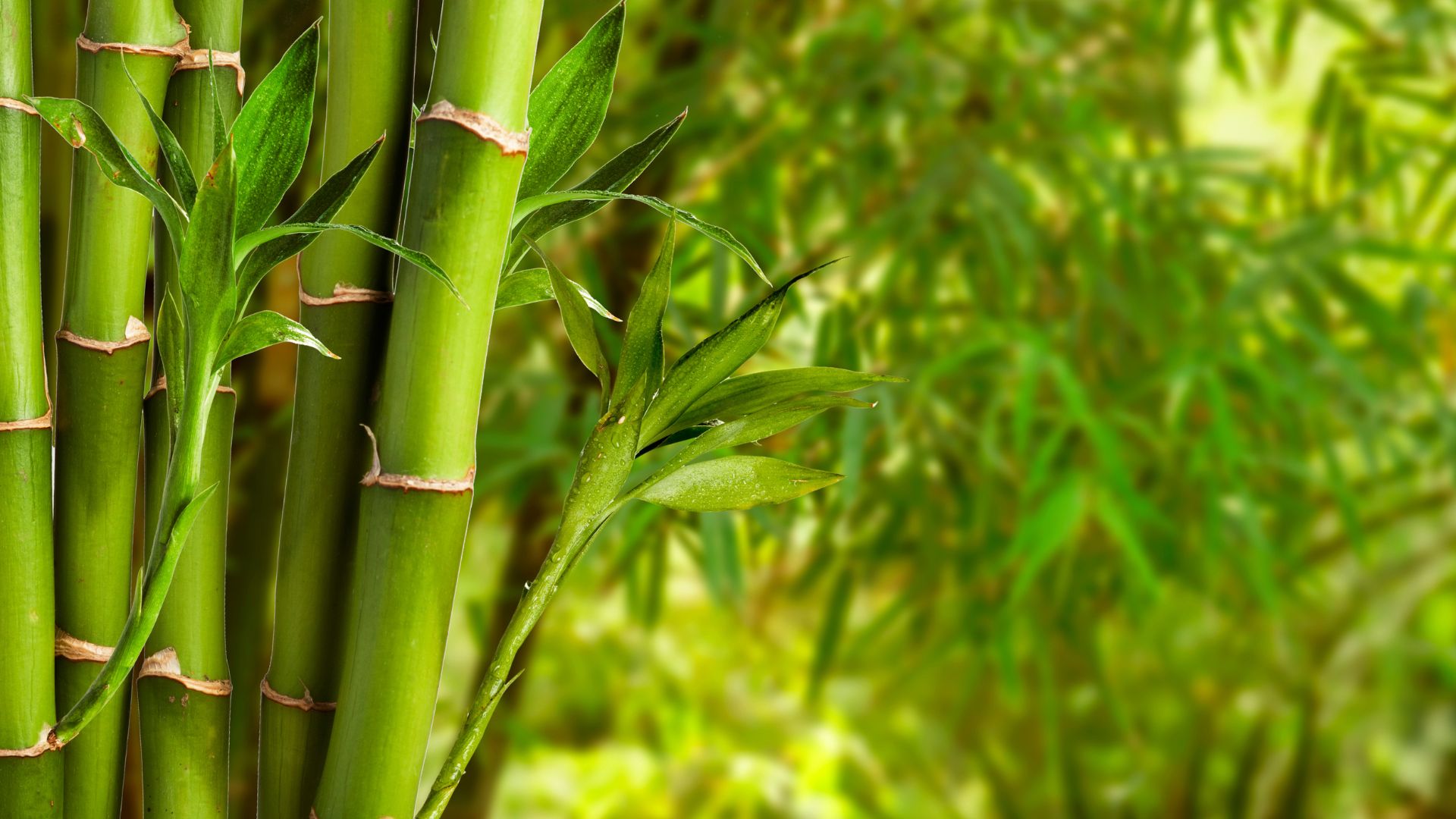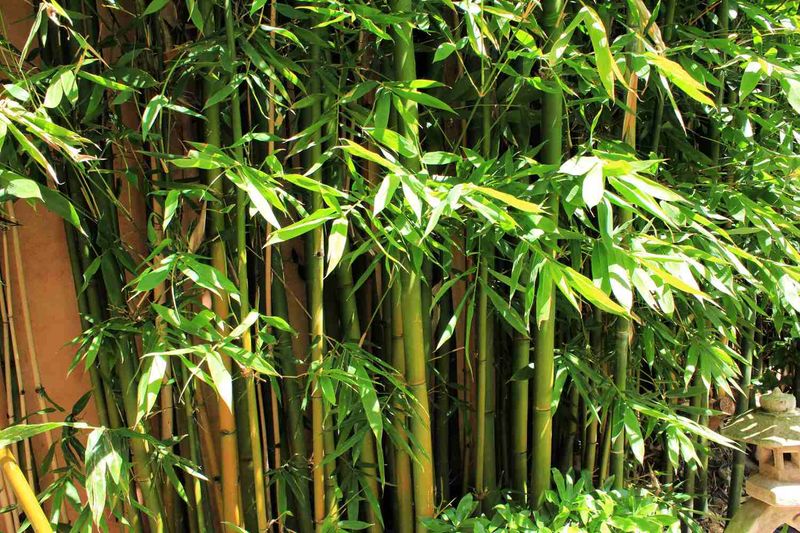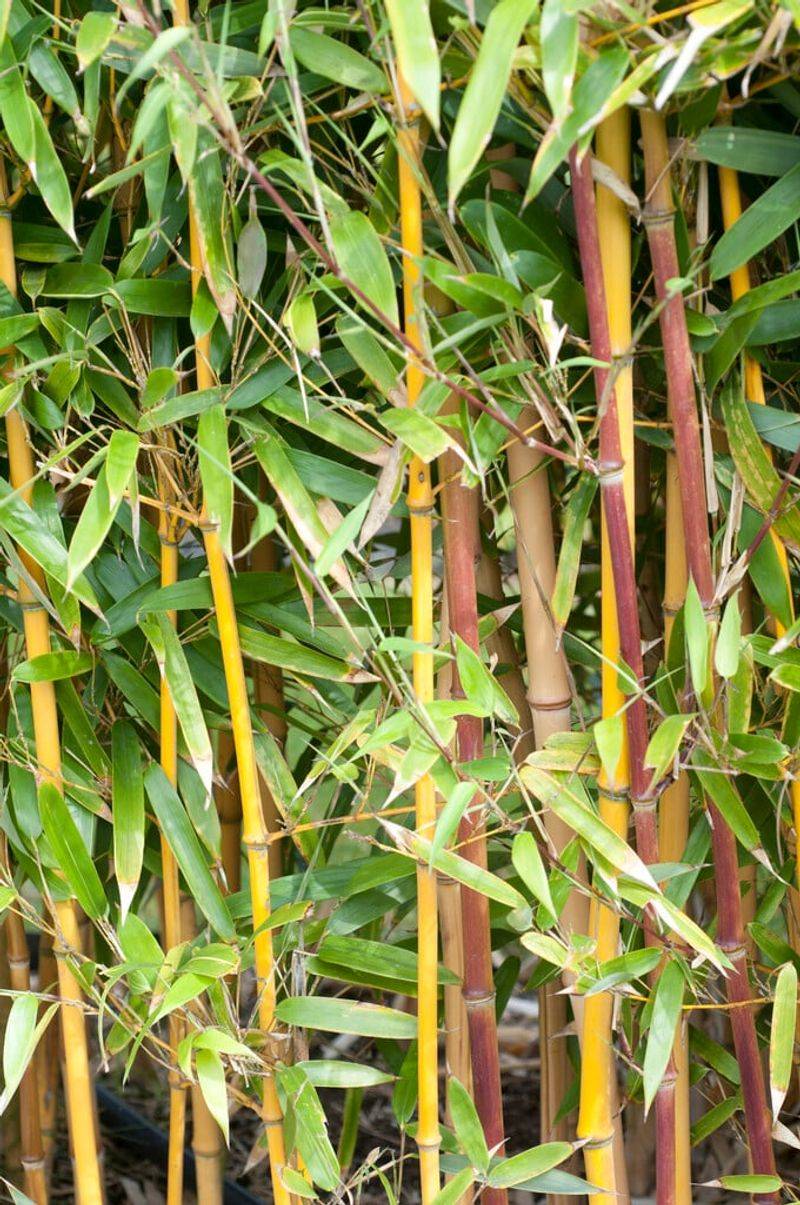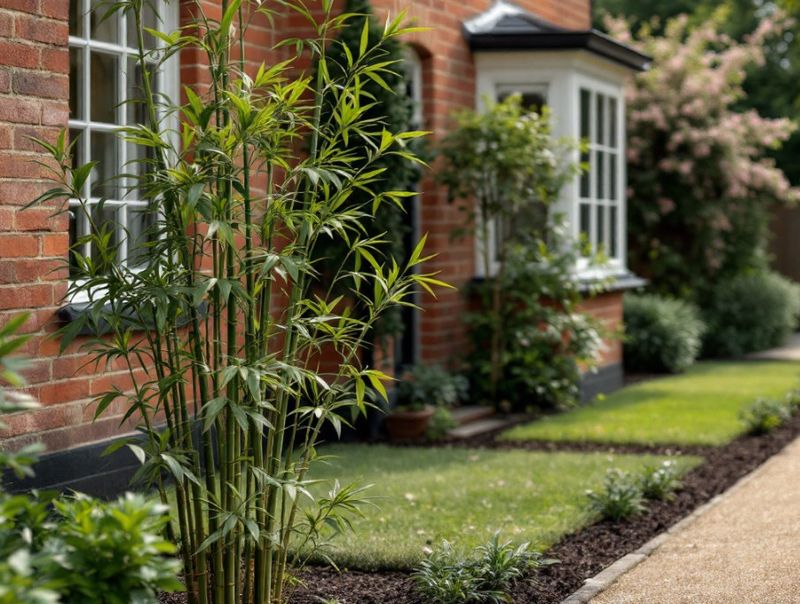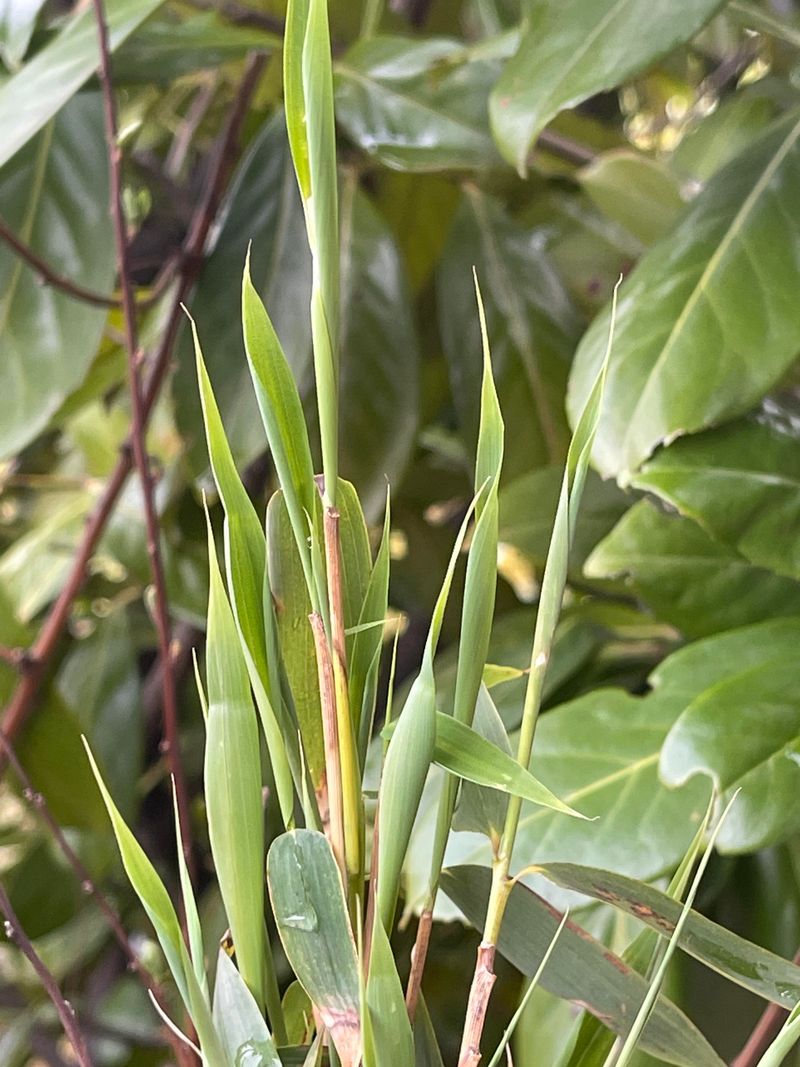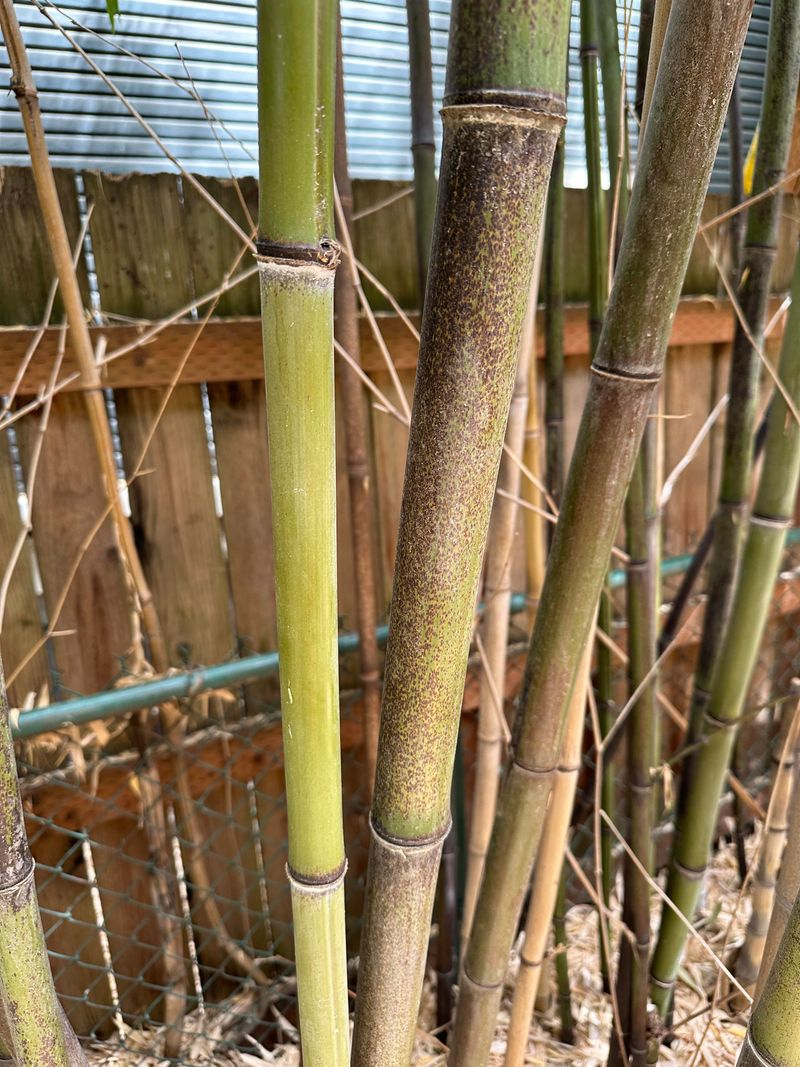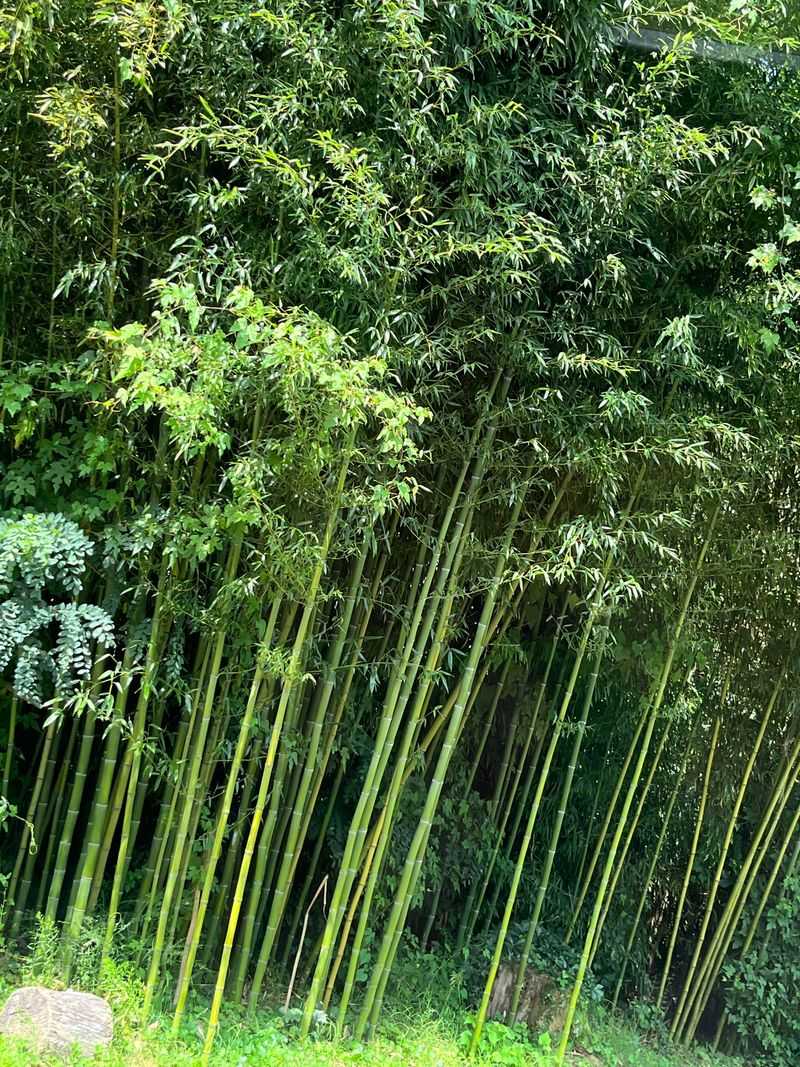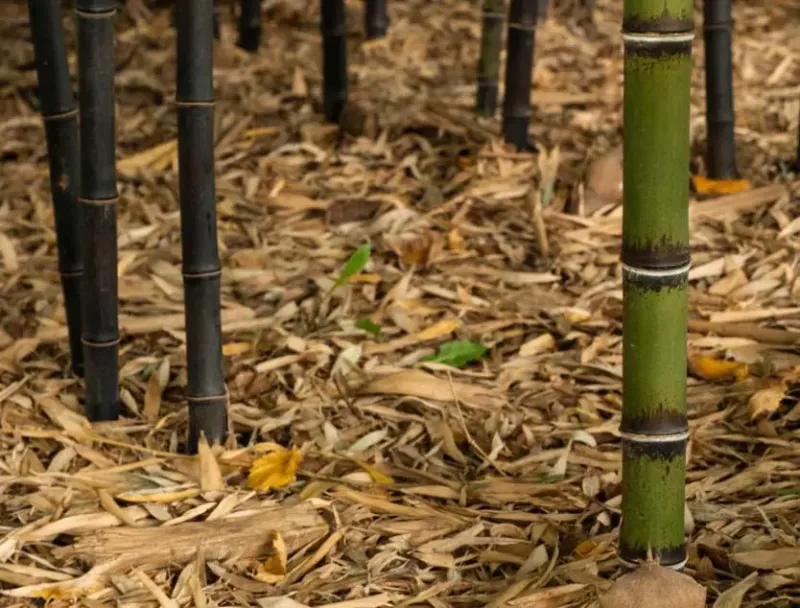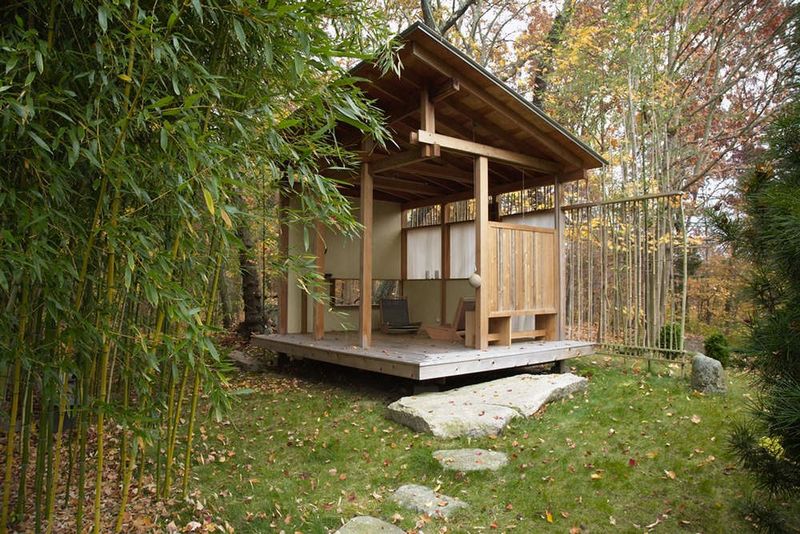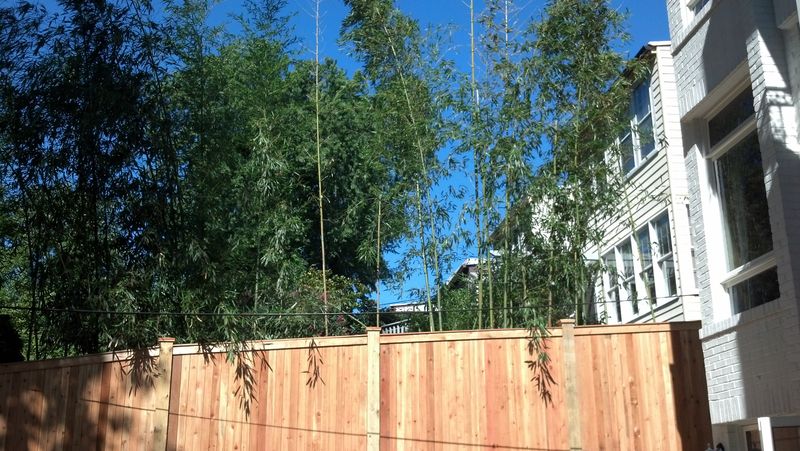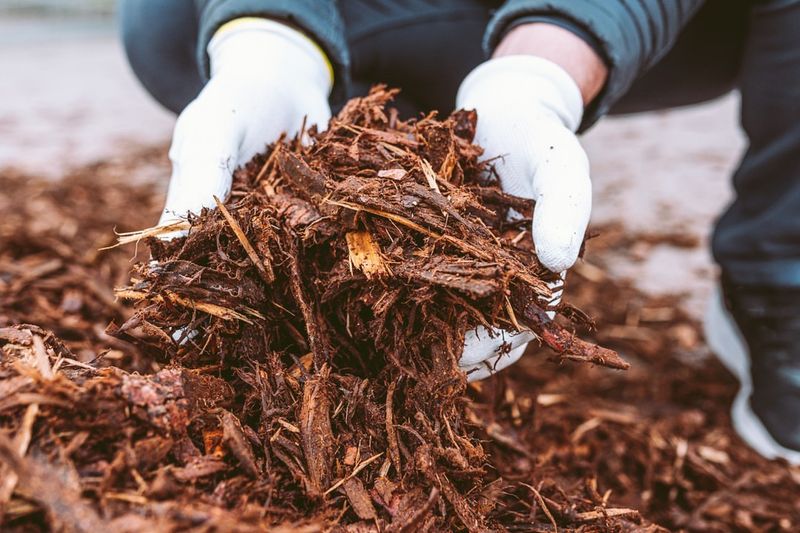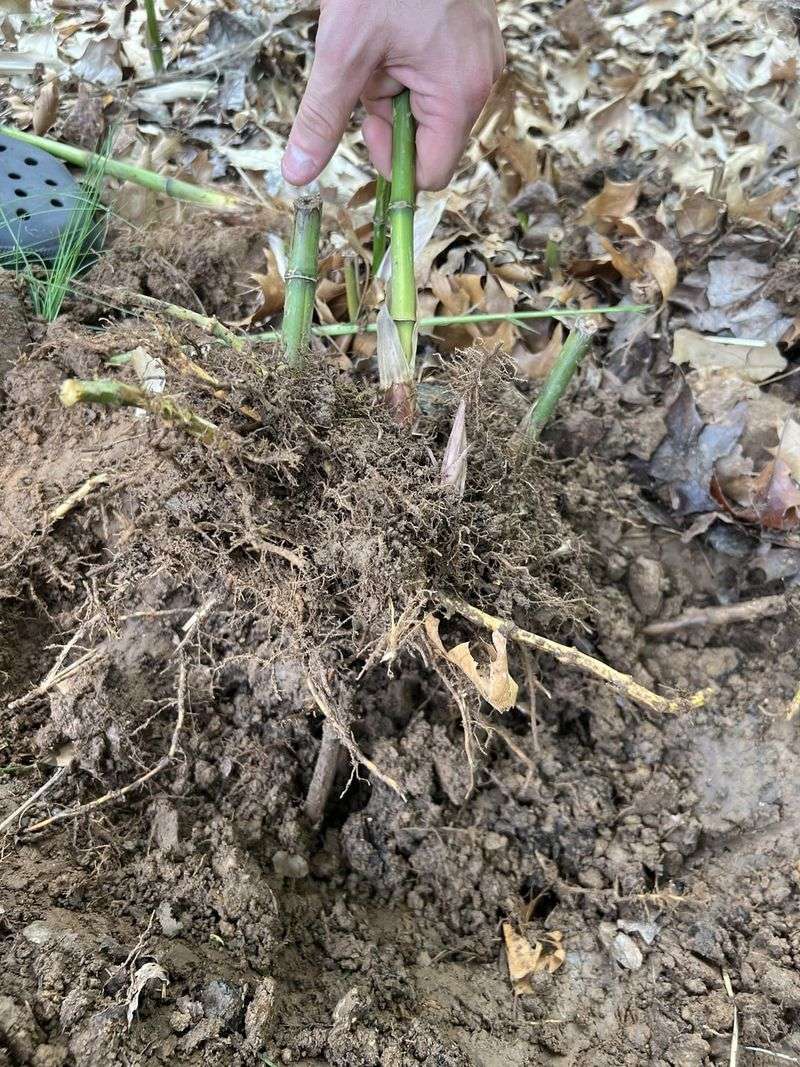Bamboo was my dream plant for creating privacy and that peaceful, Zen-like vibe in the yard. I loved the idea of fast growth and rustling green stalks swaying in the breeze. But I quickly learned that not all bamboo behaves politely once it’s in the ground.
Some types spread like wildfire, popping up yards away from where you planted them—and that’s not an exaggeration. Without proper barriers or regular maintenance, bamboo can become more invasive than you’d ever expect. If you’re set on planting it, do your homework first.
Choose clumping varieties instead of running ones, and always install a root barrier. Trust me, a little planning now will save you a lot of digging (and regret) later.
1. Know Your Bamboo Types: Running Vs. Clumping
Running varieties spread aggressively through underground rhizomes, potentially taking over your entire yard within seasons. They’re the ones that create those horror stories of bamboo breaking through patios and invading neighbors’ gardens.
Clumping types grow in a more contained circular pattern, expanding just a few inches each year. For beginners or smaller spaces, clumping bamboo offers beauty without the territorial ambitions.
I planted running bamboo thinking I could control it and spent three years battling it after it escaped under my fence. Research your species thoroughly before making this critical choice.
2. Install Root Barriers Before Planting
Proper barriers should be at least 30 inches deep and made of high-density polypropylene designed specifically for rhizome control. The barrier must extend 2-3 inches above ground level to prevent rhizomes from jumping over the top.
Installation requires digging a trench completely surrounding the planting area with no gaps or weak points. Think of it as building an underground wall that needs to be absolutely escape-proof.
My neighbor skipped this step with his running bamboo, and now five properties on our street have bamboo sprouts popping up in their gardens. Don’t assume natural boundaries like driveways will stop determined rhizomes.
3. Consider Container Planting Instead
Large containers offer excellent control over spreading while still allowing you to enjoy bamboo’s beauty. Choose pots at least 18-24 inches in diameter with adequate drainage holes to prevent root rot.
Container-grown specimens require more frequent watering and fertilizing than ground-planted bamboo. The restricted root space means they’ll also stay smaller than their ground-planted counterparts.
Every spring, I check my potted bamboo and either divide it or root-prune to prevent it from becoming root-bound. This maintenance keeps the plants healthy and prevents the roots from cracking or escaping through the drainage holes.
4. Research Mature Heights Before Selection
Some species reach towering heights of 40-60 feet, while dwarf varieties may stay under 3 feet tall. Unexpected height can block views, interfere with power lines, or create unwanted shade in your garden.
Growth rate varies significantly between species too. Certain types might shoot up 3-4 feet annually, while others grow more gradually. This makes a huge difference in maintenance requirements and how quickly you’ll achieve your desired look.
When I planted my first bamboo, the nursery tag said “medium height” which wasn’t helpful. It grew to 25 feet and now blocks my neighbor’s solar panels – something I deeply regret not researching better.
5. Understand Your Climate Compatibility
Cold hardiness varies dramatically between bamboo species, with some tolerating temperatures as low as -20°F while others die at the first frost. Checking your USDA hardiness zone against your chosen species is essential for success.
Heat tolerance matters too – some varieties struggle in the intense summer heat of southern regions, showing leaf burn and stress. Research species native to climates similar to yours for best results.
The winter of 2019 killed my prized Phyllostachys nigra when temperatures unexpectedly dropped to -15°F, despite the nursery claiming it was hardy to -10°F. Always choose varieties with hardiness ratings well beyond your typical extremes.
6. Prepare For Seasonal Leaf Drop
Every spring, most bamboo species shed their leaves, creating substantial yard debris that requires cleanup. This natural process often surprises new bamboo growers who mistake it for plant illness or death.
The fallen leaves make excellent mulch when composted but can clog gutters and drains if left unattended. They decompose slowly compared to deciduous tree leaves, so prepare for ongoing maintenance.
When my bamboo grove matured, I was shocked by how many wheelbarrow loads of leaves I collected each spring. Setting up a dedicated composting area specifically for bamboo debris has made this annual ritual much more manageable.
7. Plan For Proper Spacing From Structures
Mature culms (stalks) can grow surprisingly wide and may damage nearby structures if planted too close. Even clumping varieties need room to expand their base over time without pushing against foundations or fences.
The extensive root system requires consideration too – keep bamboo at least 10-15 feet away from water lines, septic systems, and drainage fields. Those underground networks can be damaged or clogged by aggressive rhizomes.
My garden shed now has a cracked foundation because I planted bamboo just 4 feet away, not accounting for how the expanding root mass would exert pressure. Give these plants more space than you think they need.
8. Master The Art Of Watering Bamboo
New plantings need consistent moisture for the first two years while establishing their root systems. Deep watering twice weekly is better than frequent shallow watering, which encourages shallow roots.
Established plants become surprisingly drought-tolerant but still benefit from regular deep watering during extended dry periods. Yellow leaves often indicate water stress rather than disease.
I installed a drip irrigation system around my bamboo grove that delivers water directly to the root zone. This has reduced water waste while keeping the plants healthy through our increasingly hot summers without creating the soggy conditions that can lead to root rot.
9. Develop An Annual Thinning Strategy
Regular culm removal prevents overcrowding and maintains the plant’s health and appearance. Older culms (typically 5+ years) should be removed first as they contribute less to the plant’s overall vigor.
Thinning allows better air circulation, reducing fungal disease risk in humid climates. It also creates space for new, stronger shoots to emerge during the growing season.
The first time I thinned my grove, I removed too many culms at once, stressing the plants. Now I follow the rule of removing no more than 1/3 of the total culms in any given year, focusing on the oldest, damaged, or poorly positioned ones.
10. Establish Rhizome Pruning Routines
Spring and fall inspections for escaping rhizomes are essential maintenance tasks, especially for running varieties. Look for suspicious bumps in the soil or new shoots appearing where they shouldn’t be.
When found, trace the rhizome back to its origin and sever it with a sharp spade or pruning saw. Remove the entire section to prevent regrowth, as even small pieces can regenerate.
I set calendar reminders for rhizome checks twice yearly after finding shoots in my vegetable garden 30 feet from my bamboo planting. Regular boundary patrols have prevented further invasions and kept peace with my neighbors.
11. Choose Planting Locations Strategically
Morning sun with afternoon shade provides ideal growing conditions for most bamboo species. Western exposures can scorch leaves in hot climates, while deep shade reduces vigor and culm production.
Consider seasonal shadows too – areas that receive full winter sun may be heavily shaded in summer when deciduous trees leaf out. This can significantly impact bamboo growth patterns throughout the year.
My best-performing bamboo grows along my eastern fence line, receiving bright morning light but protected from the harsh afternoon sun by taller trees. The plants in my north-facing bed grow much more slowly and produce fewer new culms each year.
12. Fertilize With Caution And Purpose
High-nitrogen fertilizers promote lush foliage but can weaken culms, making them more susceptible to breakage during storms. Balanced formulations with equal NPK ratios generally produce stronger plants.
Slow-release organic options like compost and well-rotted manure provide steady nutrition without the growth surges that chemical fertilizers can trigger. This promotes more natural, sustainable development.
Over-fertilizing my bamboo one spring resulted in rapid but weak growth that collapsed during a summer thunderstorm. I’ve switched to applying a balanced organic fertilizer just twice yearly – early spring and midsummer – with much better results.
13. Prepare For The Commitment
Once established, bamboo removal is extremely difficult and labor-intensive, often requiring heavy equipment or chemical treatments. Consider this a long-term addition to your landscape, not a temporary feature.
Even with proper barriers, maintenance requirements continue indefinitely. Monitoring for escaping rhizomes, thinning, and cleanup are ongoing responsibilities that can’t be neglected.
A friend abandoned their property maintenance for just two years, and their previously contained bamboo broke through barriers and invaded the entire backyard. They eventually spent thousands on professional removal services after DIY methods failed repeatedly.
14. Understand The Flowering Phenomenon
Most bamboo species flower only once every 60-120 years, with all plants of that species flowering simultaneously worldwide regardless of growing conditions. This fascinating but rare event typically leads to plant death after seed production.
When flowering occurs, the plant diverts all energy to seed production, causing the foliage to look increasingly unhealthy. Many gardeners mistakenly increase watering or fertilizing, which won’t help this natural process.
I witnessed my Fargesia robusta flowering after 65 years of cultivation in our region. Despite my best efforts, the entire grove died within two years of flowering – a genetic timer I couldn’t reset no matter what care I provided.
15. Consider Neighborhood Relations
Informing neighbors about your bamboo plans can prevent future disputes, especially if planting near property lines. Some communities have even enacted ordinances restricting bamboo planting due to invasion problems.
Documenting your containment methods with photos can provide evidence of responsible planting if questions arise later. Consider offering to address any escapees that cross boundaries promptly.
The worst neighborhood dispute on our street involved bamboo that crossed property lines. One simple conversation before planting might have prevented years of tension between otherwise friendly neighbors. Taking responsibility for your bamboo’s behavior maintains community goodwill.
16. Mulch Properly Around New Plantings
Apply 2-3 inches of organic mulch around new bamboo plants, keeping it several inches away from the culms themselves. This retains moisture, suppresses weeds, and gradually adds nutrients to the soil as it decomposes.
Avoid piling mulch against the culms, which can promote rot and fungal diseases. The mulch ring should extend to the drip line of the plant for maximum benefit to the root zone.
Wood chips worked better than straw in my garden, breaking down at the perfect rate to feed my bamboo while still providing year-round protection. I refresh the mulch annually in spring after removing any escaped rhizomes and thinning older culms.
17. Monitor For Pests And Diseases
Spider mites thrive on bamboo, especially during hot, dry conditions, causing stippled yellowing on leaves. Regular inspection of leaf undersides and occasional strong water sprays can control minor infestations before they escalate.
Fungal issues typically indicate poor air circulation or excessive moisture. Thinning overcrowded groves and avoiding overhead watering significantly reduces these problems in most climates.
I lost several plants to root rot before realizing my irrigation system was creating soggy soil conditions. Adjusting watering frequency and improving drainage saved the remaining plants, teaching me that prevention through proper cultural practices works better than treatment.
18. Have A Removal Plan Before Planting
Research removal methods specific to your chosen bamboo species before you plant. Running varieties typically require more aggressive approaches than clumping types if removal becomes necessary.
Keep detailed maps of any underground barriers you install, as this information will be crucial if you or future property owners need to remove the bamboo. Note exact dimensions and materials used.
The previous owners of my home planted bamboo without barriers and didn’t disclose the issue. Three years of persistent cutting, digging, and targeted herbicide applications were needed to reclaim part of the yard. Having a contingency plan from the start would have saved tremendous effort.

